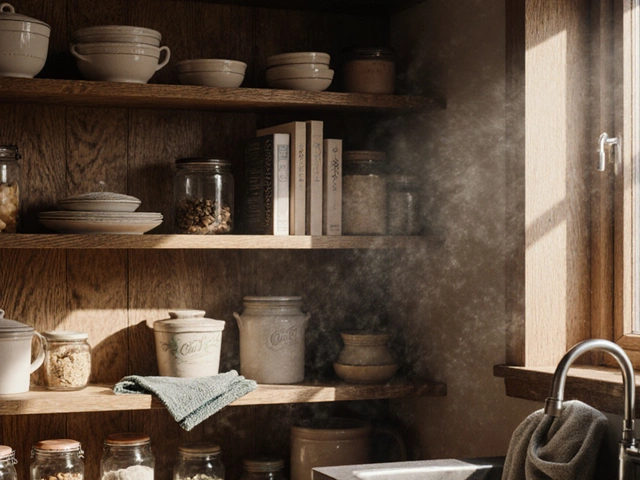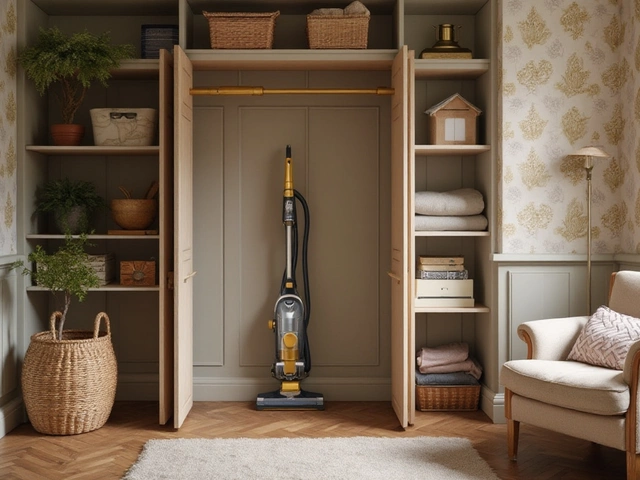Is Cutlery a Part of Essential Kitchenware?
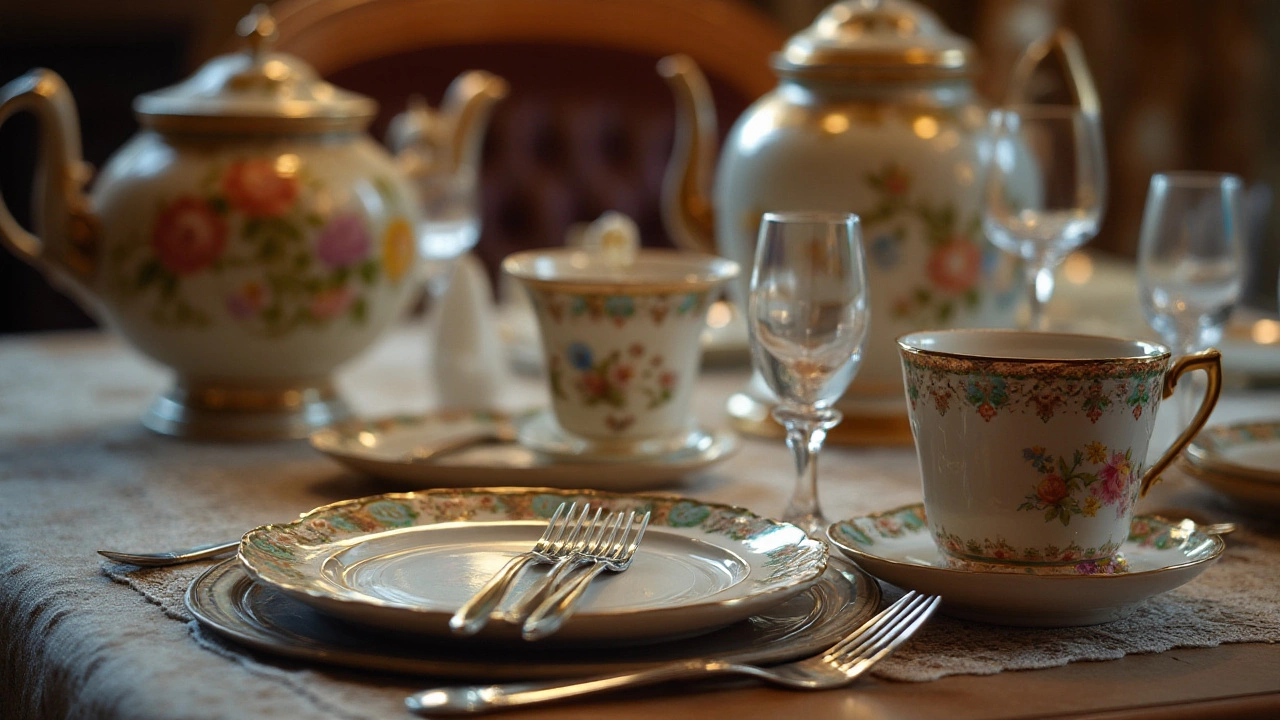
In the realm of kitchen essentials, few items are as universally recognized as cutlery. Yet, the question often arises: is cutlery truly part of kitchenware? This seemingly simple query opens a dialogue about how we categorize the tools that fill our kitchens and dining tables.
From the humblest spoon to the intricately designed steak knife, cutlery has been a staple of human life for centuries. It serves not just the practical need of eating and preparing food, but also contributes to the aesthetics of dining experiences. Understanding whether cutlery should be classified under kitchenware invites us to look beyond obvious practicality and consider the role these items play in our daily lives.
This exploration will take you through the journey of cutlery, from its historical roots to the diverse styles available today, offering insight into how to choose and care for these essential tools. Whether you're setting a table for a family dinner or equipping a professional kitchen, knowing what to look for in cutlery can enhance both functionality and beauty in your culinary world.
- Understanding Kitchenware Categories
- Historical Significance of Cutlery
- Selecting the Right Cutlery
- Tips for Maintenance and Care
Understanding Kitchenware Categories
When we first think about the tools that make up our kitchenware, we often picture pots, pans, knives, and perhaps a shiny set of *cutlery* sitting neatly on the table. But understanding what truly qualifies as *kitchenware* takes us into a broader spectrum of items, each having its unique role within the culinary landscape. Kitchenware encompasses all the tools we use for the preparation, serving, and consumption of food. This can range from essential cooking utensils to specialized gadgets that make cooking a joy rather than a chore. Such diversity means that each piece has been developed with a purpose, contributing variously to culinary ease, precision, or an elevated dining experience.
The categorization of kitchenware often begins with its function. We have cookware, which includes all the items that are used directly in the cooking process, such as pots, pans, and baking dishes. Then, there are utensils, which can be hand tools like spatulas, tongs, and whisks that make cooking manageable. But then we step into the realm of *cutlery*, which might seem on the periphery of basic *kitchenware*. Its purpose is dual: for eating and sometimes for preparation. Historically, cutlery not only had a practical utility but also a decorative function, often showcasing craftsmanship and wealth.
The historical context gives us further insight: in many cultures, the evolution of cutlery tells a story about societal changes, wealth distribution, and technological advancements. For instance, silver spoons were often given as gifts to mark significant life milestones, pointing to the *cutlery's* symbolic status in society as much as its functional use. A quote from the culinary historian Rebecca Rupp notes, "The fork, a simple tool with a complex history, wasn’t a standard part of the dining set in Europe until the 18th century."
"The mysterious journey of a fork from an odd Italian dining accoutrement to a staple in every household is a fascinating tale intertwined with cultural shifts," Rupp adds.
As lifestyles evolve, so too does our kitchenware. What was once considered essential a century ago has changed, along with food trends and technological advancements. Today, electronic and digital kitchen gadgets blur the lines further, adding multifunctionality and convenience to our kitchens. Items such as blenders and food processors, though not traditionally in the same category, have become staple *kitchenware* for many, emphasizing efficiency and modernity. Designers today pay keen attention to the aesthetics of *kitchenware*, with many pieces designed to transition effortlessly from stove or counter to the *dining* table, thus making them integral parts of both cooking and serving.
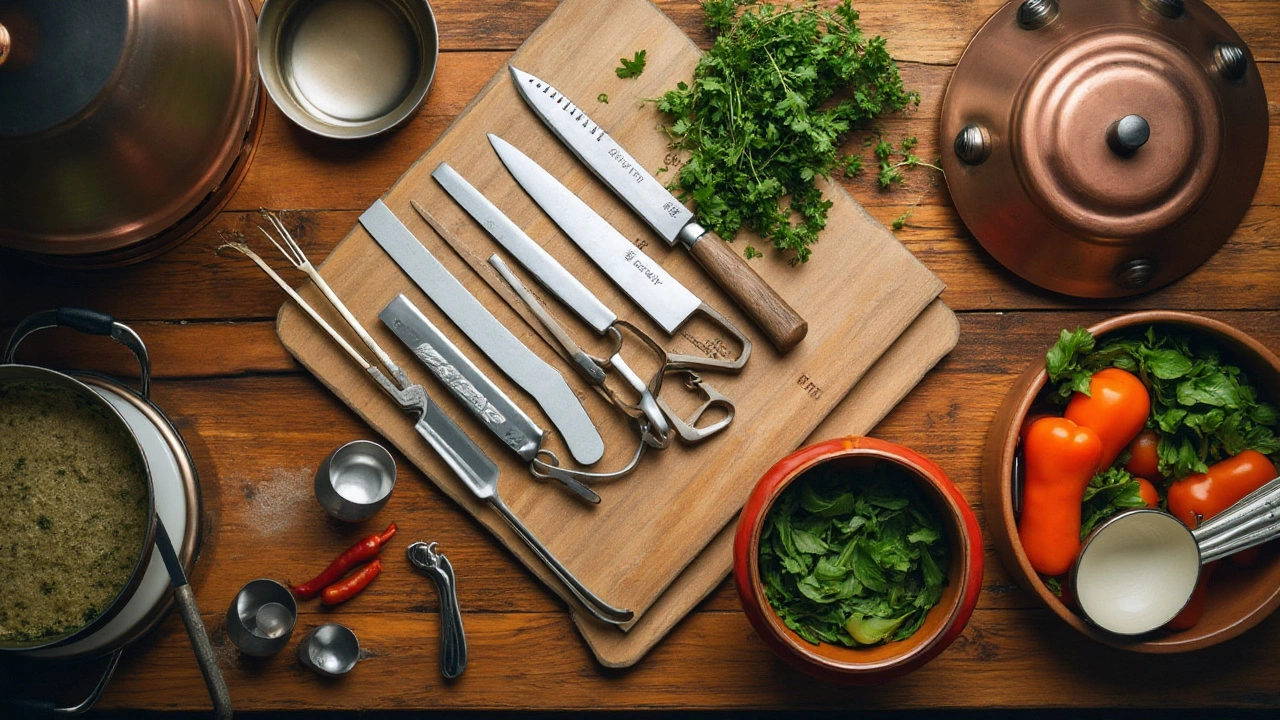
Historical Significance of Cutlery
When we think about cutlery, images of elegant dinner settings or the everyday utensil drawer might come to mind. Yet, the history of these essential tools is as intricate and fascinating as the tasks they perform. Dating back thousands of years, cutlery has always been more than just an instrument for eating; it has been a symbol of culture and evolution. Long before stainless steel forks were commonplace, ancient civilizations carved spoons from bone and crafted knives from sharp stones, highlighting their significance in every era. The very word 'cutlery' stems from the Middle English term ‘cuteler,' which can be traced back to the Latin word ‘cultellus’ meaning a small knife, which provides insight into how deeply ingrained these tools are in human history.
Cutlery’s journey through time showcases a striking evolution of materials and designs, reflecting advances in technology and shifts in societal norms. Early utensils were primarily functional, made from the materials at hand. As metallurgy advanced, so did the quality and aesthetic appeal of cutlery. The Bronze Age marked a significant period when people began to forge tools from metal, a trend that revolutionized dining. By the Middle Ages, forks were considered luxurious items in Europe, as they were often ornately crafted and used by nobility during formal feasts. This association with wealth set the stage for the role of cutlery in society and even politics. “Cutlery is not just about eating; it represents refinement,” notes historian Margaret Visser in her acclaimed exploration of table manners and history.
The spread of cutlery further accelerated during the Renaissance, as trade routes opened and cultural exchanges introduced new eating habits and utensils. The introduction of the fork to Italy and subsequently to the rest of Europe is a testament to this cultural diffusion. Initially frowned upon by some religious communities who deemed them unnecessary—if not indulgent—forks eventually found favor, illustrating the gradual acceptance of innovation within dining customs. This period also saw the emergence of sets of utensils made to match, ushering in the concept of designing complete, cohesive dining layouts.
In more recent history, the Industrial Revolution brought about mass production, making cutlery accessible to the general public. This democratization of kitchenware has not only altered the way we eat but also shifted the perception of cutlery from luxury to necessity. Today, the choice of cutlery, whether it be stainless steel for durability or silverware for a touch of elegance, remains a testament to personal taste and style. With numerous styles and materials available, cutlery continues to evolve, as does its role in fulfilling both practical and aesthetic needs in modern cuisine.
Interestingly, modern collectible cutlery and vintage knives command significant interest on the antique market, highlighting a continued appreciation for historical pieces. An auction house specializing in antiques, Phillips, once reported sales of over a million dollars for a collection of Renaissance era silver cutlery—a remarkable testament to its historical and cultural value. Our well-used knives, forks, and spoons may seem ordinary today, but they remain rich with history and significance, enhancing every meal with centuries of tradition and innovation.

Selecting the Right Cutlery
Choosing the perfect set of cutlery to fit your lifestyle can be a delightful endeavor, threaded intricately between personal taste and practicality. When exploring this, it's essential first to recognize the different types of cutlery available and their intended use. A standard set usually includes knives, forks, and spoons of varying sizes and styles, each designed for specific kinds of meals and settings. Understanding the nuances of these essentials can significantly enhance your dining experiences and culinary preparations, making meals not just a necessity but a genuine pleasure.
Materials play a critical role in selecting cutlery. Most traditional pieces are crafted from stainless steel, prized for its durability and resistance to rust. However, there are other exciting options, such as ceramic handles or even titanium pieces, each bringing a unique aesthetic and feel to the table. Additionally, considering the weight and balance of each piece is vital, as it impacts comfort and ease of use. A well-balanced knife, for example, should feel comfortable in your hand, offering precise control whether you're slicing through fruit or carving a more substantial piece of meat.
According to culinary expert Julia Child, "The best way to execute French cooking is to get good and loaded and whack the hell out of a chicken. Bon appétit!" While humorous, it underscores the importance of having reliable cutlery in the kitchen—it's not just about keeping up appearances, but ensuring functionality and ease in every dish prepared.
Style is another important consideration. From the sleek modern designs that embrace minimalism to more ornate, traditional patterns reflecting historical elegance, the aesthetic of your cutlery can set the tone for any meal. Some families treasure silver sets passed down through generations, each piece telling its own story of gatherings past. While modern sets may not carry the same history, their style speaks volumes about your personal taste and how you wish your meals to be perceived.
Budget often dictates the final decision, but investing in a quality set of cutlery doesn't always mean breaking the bank. There are affordable options that do not compromise on quality or appearance. It's helpful to read reviews and, when possible, physically handle the pieces to determine what feels right for you. Whether you're looking for cutlery that stands up to the robust demands of everyday meals or pieces that shine in special occasions, understanding your own needs and expectations can lead to a choice that satisfies both your practical and aesthetic requirements.
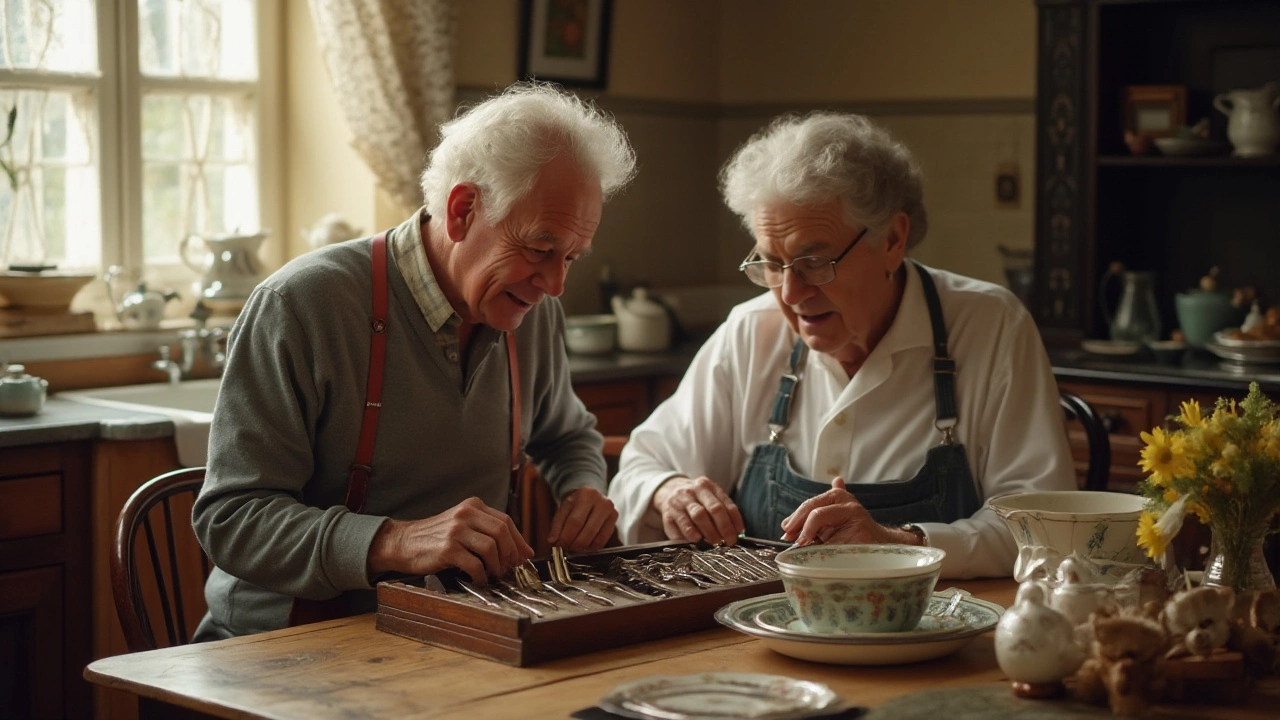
Tips for Maintenance and Care
Proper maintenance and care of your cutlery can significantly prolong its life and preserve its function and appearance. First, consider the type of material your cutlery is made from, as different metals and coatings require varying levels of attention. High-carbon stainless steel, for example, is known for its durability and resistance to rust, yet it still benefits from regular polishing and gentle scrubbing to maintain its sheen and sharpness. Avoid leaving stainless steel cutlery in water for an extended period, as this could lead to spotting or staining despite its rust-resistant properties.
Washing your cutlery promptly after use is crucial. Handwashing is recommended, especially for high-quality pieces, as dishwashers can be harsh and lead to discoloration or dullness over time. Use a soft sponge and mild detergent, and always avoid scrubbing vigorously with abrasive pads. As culinary expert Julia Child once aptly said,
“A well-kept knife is the key to good cooking. It slips through ingredients like butter and ensures your cuts are precise.”Rinse thoroughly with warm water and dry immediately to prevent any water spots or residual marks.
Storage also plays a vital role in cutlery care. Investing in a good cutlery tray or block can save your fine pieces from unnecessary nicks or scratches that occur when items are loosely tossed in the drawer. Keep your knives separate from other utensils to avoid chipping the blades. A magnetic strip can be a great tool for storing knives securely and safely. Additionally, honing your knives regularly will maintain their edge and reduce the need for frequent sharpening, which actually removes metal from the blade.
For those who enjoy entertaining, polishing your utensils before a special occasion can bring out their best shine. Silver cutlery, which many reserve for holidays and events, often tarnishes when left unused. Regular polishing with a quality silver cloth and a gentle silver polish will keep these valuable pieces looking pristine. After polishing, rinse them well to remove any residual polish, as this could tarnish the silver further over time.
While these steps might seem labor-intensive, with a little diligence and care, your kitchen tools, like all good investments, will serve you better and longer. Whether you're using them for everyday meals or special gatherings, these maintenance tips will ensure that your cutlery not only performs well but also impresses your guests time and time again. Knowing these details about each piece and its needs underscores the importance of quality utensils in the kitchen, blending functionality with a touch of style and tradition.


